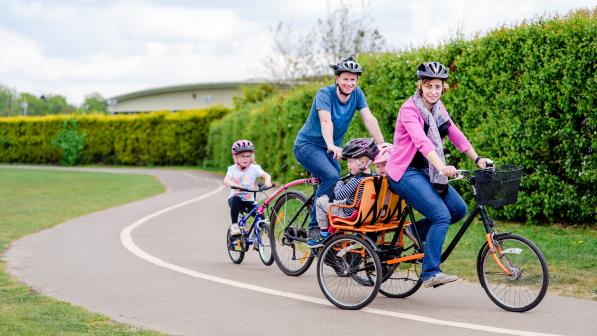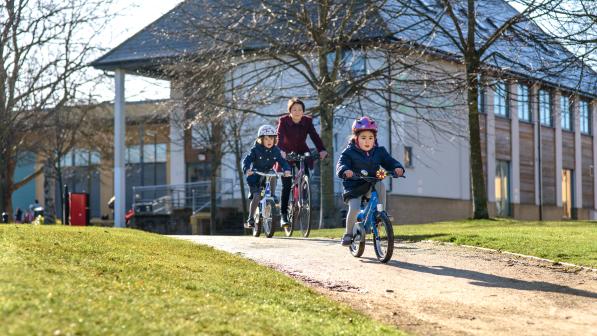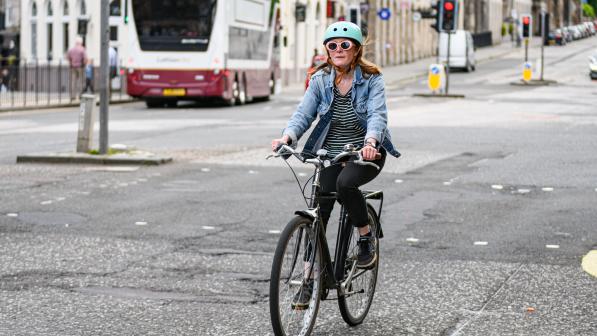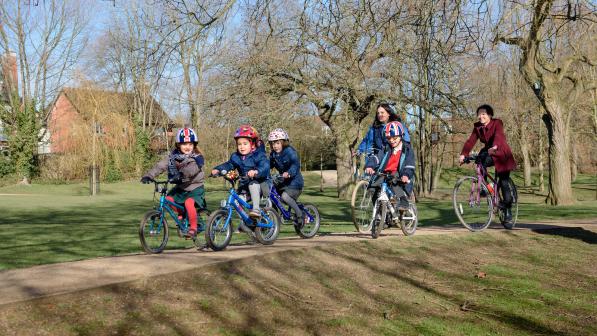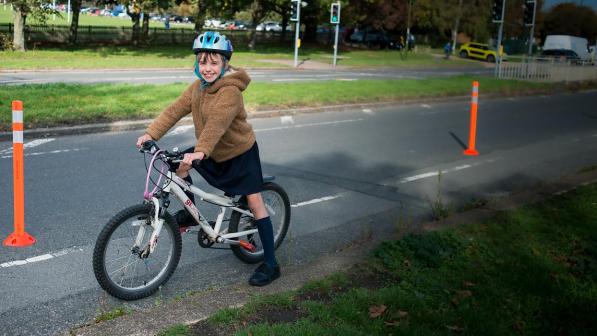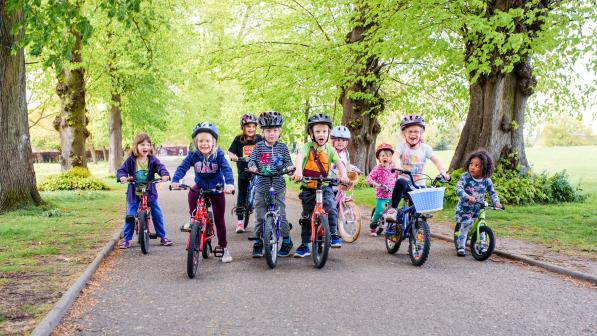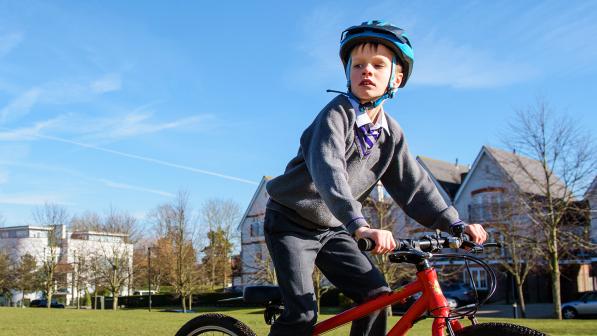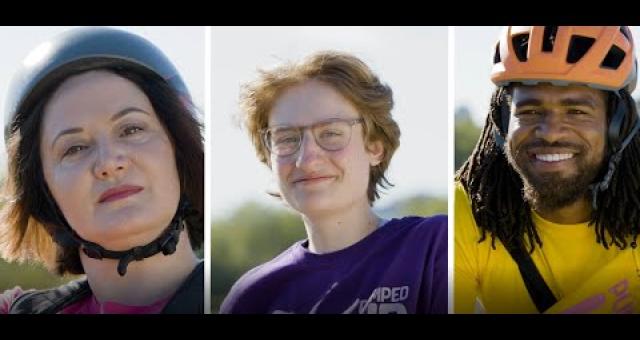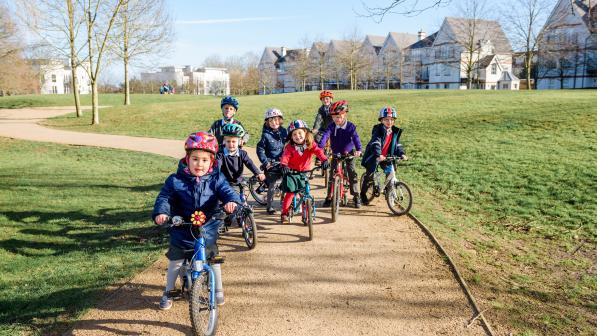10 tips for cycling to school

1. Find an easy, quiet route
Take a smooth, flat route if possible, so that it’s suitable for younger cyclists. You’ll be surprised by how many quiet roads or back streets there are in your area that lead to school, and don’t be put off by a less direct route compared to a busy, direct one.
It’s much nicer to cycle a quieter route, even if it’s a little longer, and may still be faster than driving if you are used to spending the school run stuck in traffic. Look out for the National Cycle Network or see if you can use canal towpaths and routes through parks if accessible.
2. Practise the route at the weekend first
You don’t want to be trying out a new route if you’re already running late or under stress on your first morning, so take some time at the weekend to practise, explore different routes, and make sure you know where you are going and how long it will take.
It will give you and your children a chance to try it out without the time pressure and with less traffic around too.
3. Be prepared
Mornings are a busy time for parents and it can be overwhelming getting the kids ready to cycle on top of all the things that need to be done before setting off.
However, with a little preparation, cycling can be the best way to travel to school. Pack bags the night before and leave helmets, if you choose to use them, by the front door so in the morning you can just get up and go.
4. Purchase or hire the correct bike accessories
Carrying heavy books and equipment is often seen as a barrier to cycling or scooting to school. However, panniers fitted to a rack on a bike are a great solution for carrying everything you need, although a small backpack may also be sufficient.
And, for the winter months, a white front light and red rear light (constant or flashing) and reflectors are legal requirements when cycling in the dark.
5. Mix it up and don’t try to do too much
For busy families, different ways of making the journey to school will work for different days. Walking, scooting, cycling, and park & ride are all good options, so do what works best for you and what the weather allows – and don’t think it has to be all or nothing.
If you currently drive for every trip, why not try cycling on one day a week to start with and then build that up?
6. Be safe
The biggest concern for adults when it comes to children cycling to school is danger from traffic. This fear has driven children into the back seat to be ferried around, with 42% of primary pupils now being driven to school.
For those concerned about safety, ride in a line with children in the middle of adults for maximum protection and visibility. If there’s only one adult, take up a position at the back to ensure all children are in view.
7. Consider cycle training for you or your children
Courses like Bikeability are great and have come on a long way since cycling proficiency began. Cycle training teaches valuable skills, such as good road positioning, signalling and visibility and can help both parents and children feel at ease on busy streets.

8. Choose the right bike or scooter
Try to purchase a bike that is the right size and avoid the temptation to buy one which is too big, so that they can ‘grow into it’. This is important because a large bike will be more difficult to control and can put young children off cycling.
Don’t be put off considering a second hand bike either - it can be a cost effective way of obtaining a bike and there are a lot of good options for buying second hand.
9. Try using a cargo bike
Parents with very young children are often put off cycling to school as space on a single bike is limited. Think again.
Gone are the days when the only way to take a passenger on your bike was to 'give them a backie’ – there's now a vast choice of safe and stylish ways to transport your children.
Cargo bikes, in particular the box-bike style, are ideal for transporting young children around. Depending on the type (and the size and age of your children) it can be possible to transport up to four with space for other cargo as well.
10. Make it fun
Don't forget it should be fun! Cycling is really enjoyable, for both adults and children. Ease in with small trips to the park and build up to the journey to school. Keep younger children entertained by talking about what you see throughout the journey.
This will help them to get to know their local area and feel part of it, while also making the ride more fun for all of you.
